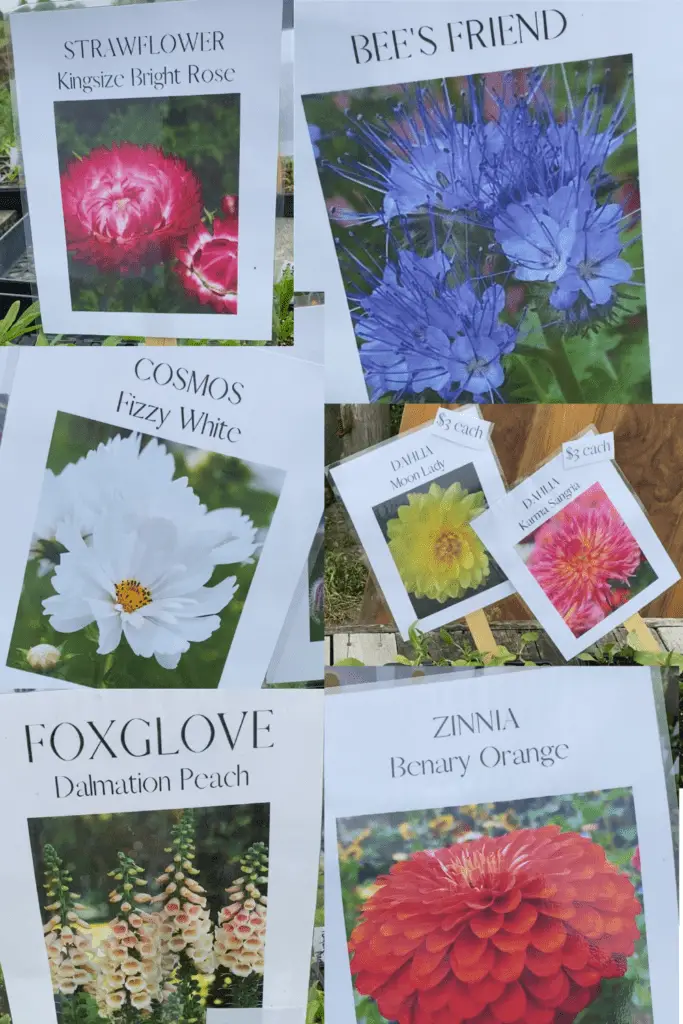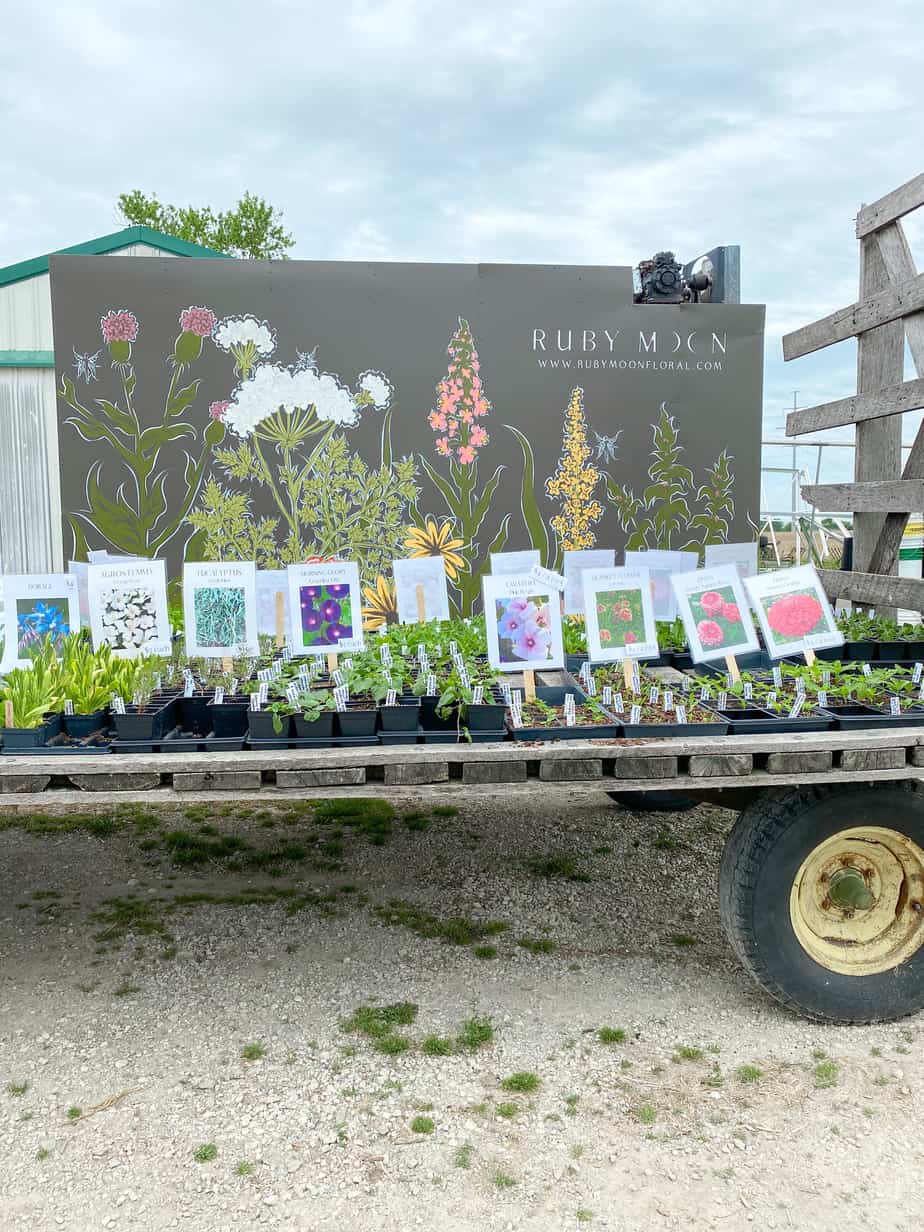One of my favorite summer activities is going to the farmers market and building my own flower bouquet. There is a specific flower truck that always has the most unique, gorgeous blooms! The only downfall is that each flower is usually at least a dollar ranging up to a few dollars, so the price of the bouquets can really add up. I’ve always wanted to try growing my own cutting flowers so I could make beautiful bouquets from my backyard (for free!), but I never knew which flowers would make the best cutting flowers. When I saw on Instagram that a local U-pick flower farm was having a plant sale, I knew this was the perfect place to get flowers for my first cutting garden. Here is a list of all of the flower plants I purchased and and the tips I’ve learned on how to care for them.
1. Strawflower
These are annual flowers so they need to be replanted every year. Strawflowers like direct sun and may require a trellis growth support. Strawflowers are ready to be cut when 2-3 layers of petals have started unfolding. Harvesting regularly will encourage more growth.
2. Foxglove
Foxglove flowers usually bloom for at least two seasons, so they should return again the next year after you plant them. These flowers like moist soil and fertilizer every week or two. Harvest often and deadhead to encourage new growth. With proper care, foxgloves should produce new blooms every week or two. They are ready to be cut when 1/3 of the flowers on the stem are open. These flowers are poisonous so keep away from children and pets.
3. Cosmos
To encourage more growth and longer stems, “pinch” the plant when it is 8-12 inches tall by pruning the top 4 inches off above a set of leaves. Cut cosmos when the buds are colored but have not opened yet. Harvest and deadhead regularly to keep flowers blooming.

4. Bee’s Friend
Bee’s Friend is the best plant to attract bees to your garden. It’s an annual flower that likes full sun and dry soil. It’s recommended to wear gloves when handling because the tiny hairs on these flowers can cause skin irritation for some people. Cut when flowers are just starting to open.
5. Zinnia
Zinnias need to be planted in direct sun. To encourage long stems, do the pinching method as described under the cosmos section. This technique helps the plant send energy to the area that was cut and produce more stems. Cut zinnias when flowers are fully ripe and stiff. Harvest and deadhead regularly to encourage more blooms.
6. Dahlia
One dahlia tuber can multiply into several tubers just a few months later. Dahlias need planted in a sunny spot, 4-6 inches in the dirt with the growing eye facing up. They need consistent water in well draining soil. Dahlias grow very tall and may require stake growth supports. Pinch once the plant is about 1 foot tall. Dahlias won’t open up anymore once they are cut, so wait to harvest until they are fully open. You will need to dig up the tubers before the first hard frost. Shake off the dirt and gently rinse them off. If the tuber has several eyes you can divide them using a sharp knife (each one should have its own eye). Lay them out for several weeks until they are completely dry and store in a cold, dry spot with good air circulation.

If you are thinking about starting your own cutting flower garden, definitely reach out to a local flower farm to see if you can buy plants from them. There are also many flower farmers who sell seeds online. I’m hoping to start my flowers from seed next year! I will share updates on my cut flowers over on Instagram so make sure to follow me there!
Thanks for reading!
Xo, Ciara
